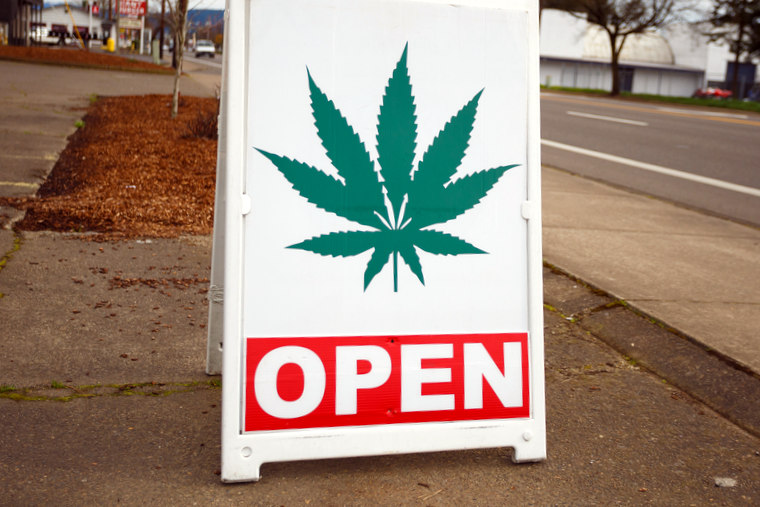So, you’re serious about opening a cannabis dispensary. Whether you’re intrigued by the rising demand for medical marijuana, the booming adult-use (recreational) market, or both, you’ve come to the right place. It’s easy to see why so many entrepreneurs want in: U.S. sales alone are expected to exceed $50 billion within the next few years, and Canada has had federal legalization since 2018. But beneath the hype lies a complex labyrinth of regulations, substantial startup costs, shifting consumer preferences, and plenty of operational hurdles.
This guide goes beyond a primer and really digs into each step, explaining the why, how, and what to expect. By the end, you’ll have a thorough understanding of researching local laws, creating a stellar business plan, financing your shop, finding a compliant location, hiring a winning team, managing inventory, planning an unforgettable store design, marketing under strict guidelines, and more. Let’s get rolling.

1. Research & Planning
Before you invest a dime, spend the necessary time to do your homework. Research and planning create the foundation for everything else to come. Unlike many traditional businesses, dispensaries live under stricter legal guidelines, complicated local zoning rules, and unique consumer demographics. Cannabis might be legal in your state or province, but your specific city or county may have additional bylaws or outright bans. Your planning stage should be exhaustive.
Local Laws vs. State/Provincial Regulations
- Patchwork of Regulations: In the U.S., each state has its own set of cannabis regulations. Some have medical-only programs (like a regulated patient system), others permit adult use, and some do both. Even within the same state, local municipalities can impose restrictions on where (and sometimes if) dispensaries can operate.
- Zoning and “Opt-Out” Areas: Many cities impose buffer zones around schools, churches, and residential neighborhoods—usually in the range of 500 to 1,000 feet. Some municipalities even vote to “opt out” of allowing dispensaries entirely. It’s vital to confirm your desired city actually allows cannabis retail.
- Unique Bylaws: Some local rules specify store hours, signage limitations (e.g., no pictures of cannabis leaves), or even the minimum parking spots you must provide.
- “Must-haves” and “Red flags.” For instance, you might need to be a resident, have a clean criminal record, or meet minimum capital thresholds.
Scoping Out the Market
- Medical vs. Recreational: Are you planning to operate as a medical-focused dispensary with an emphasis on patient wellness? Or do you see yourself as a trendy adult-use shop highlighting premium products?
- Demographics: Different age groups have varying consumption habits. Seniors may prefer tinctures and topicals, while younger adults may gravitate toward edibles, vapes, or infused beverages.
- Competition Analysis: Check how many other dispensaries are nearby. Does the area already feel saturated? If so, can you differentiate by offering unique product lines, superior customer experience, or specialized medical counseling?
Preliminary Budgeting
- Typical startup costs. Opening a dispensary often requires $150,000 to $2 million depending on state requirements, real estate, build-outs, and more.
- Regulatory Costs: Licensing fees can reach tens of thousands of dollars, not counting annual renewal fees.
- Build-Out & Security: Cannabis dispensaries often need robust security systems, plus specialized build-outs for waiting rooms and locked storage/vaults. These can cost more than a regular retail store setup.
- Operational Reserves: You’ll need enough cash on hand to cover initial inventory orders, staff training, rent, and monthly bills while you wait for revenues to pick up.
- Plan for unexpected expenses. Cannabis regulations can shift. Licensing fees can spike, or you might need specialized security measures.
Above all, a thorough research plan ensures you understand the realities of the cannabis world before you sink precious time and money into forming a business. This blueprint will also become a key section in your official business plan.
2. Creating Your Business Plan
Your dispensary business plan is more than a formality; it’s your roadmap for success. Investors, partners, and regulators alike will expect you to have one. It should be detailed and address your operation strategy, financial plan, compliance measures, marketing approach, and contingency strategies.
Key Sections of Your Business Plan
- Executive Summary
Offer a concise overview. Highlight your mission statement—do you plan to focus on health and wellness, or provide a high-end recreational experience? - Company Description
Cover your legal structure, ownership breakdown, and relevant backgrounds of your management team. Demonstrate why you’re the right person (or team) to do this. - Market Analysis
Prove you’ve examined your competition, potential consumer demographics, and general trends in the cannabis space. Show how you’ll stand out. - Operations Plan
- Facility & Location: Potential address or region, lease or ownership details, layout concept.
- Staffing: Outline positions such as budtenders, security officers, store manager, inventory manager, compliance officer, etc.
- Supplier Relationships: Will you grow your own cannabis or source wholesale from licensed producers?
- Financials
- Startup Costs & Ongoing Expenses
- Revenue Projections & Sales Forecasts
- Break-even Analysis
- Funding Needs (and how you plan to use them)
- Compliance & Security
Detail your plan for tracking product seed-to-sale, verifying customer IDs, preventing underage sales, storing inventory safely, disposing of unsold cannabis, and meeting local, state, and federal regulations. - Marketing & Growth Strategy
Explore how you’ll attract new customers, encourage loyalty, and scale if demand spikes.
A thorough business plan, usually 30–50 pages, shows regulators that you’re serious and helps secure funding from investors who see you’ve done the research.
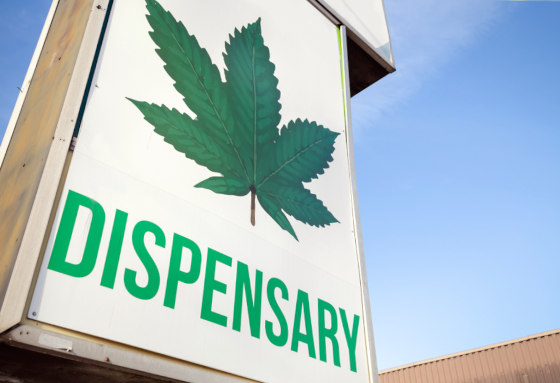
3. Structuring Your Dispensary and Choosing a Legal Entity
Dispensaries typically operate under one of four common legal structures in the U.S. (though this may differ in Canada or elsewhere):
- Sole Proprietorship
- Advantages: Straightforward to set up; no formal paperwork if you’re the only owner.
- Drawbacks: Unlimited personal liability. If the dispensary gets sued, your personal assets are at risk. This is rarely advisable for a high-liability venture like a dispensary.
- Partnership
- Advantages: Splits responsibilities and capital among two or more partners.
- Drawbacks: Partners may share liabilities. Ensure you draft a robust partnership agreement covering profit splits, exit strategies, and dispute resolution.
- LLC (Limited Liability Company)
- Advantages: Protects personal assets from business liabilities; pass-through taxation. Flexible management structure.
- Drawbacks: Must follow formalities like annual reporting and separating personal/business finances. Some states have higher filing fees for LLCs.
- 3Corporation (C-Corp or S-Corp)
- Advantages: Strong liability protection; easier to raise large amounts of capital by issuing shares.
- Drawbacks: Double taxation for a C-corp (corporate taxes plus shareholder taxes). An S-corp bypasses double taxation, but you must meet eligibility requirements and only have a limited number of shareholders.
Choosing the right entity depends on multiple factors: how many partners you have, how you plan to handle taxation, how you’ll fund the business, and your risk tolerance. Also, keep in mind that dispensaries face unique tax challenges under IRC Section 280E at the federal level. A skilled cannabis CPA or attorney can guide you on the best structure.
Once you decide, register your business name with the Secretary of State, and if you plan to operate under a different trade name, file for a DBA (Doing Business As). Next, get an EIN (Employer Identification Number) from the IRS so you can pay taxes and hire employees.
4. Raising Capital and Financing Options
Cash is king when opening a dispensary. While costs vary widely by location, it’s not unusual to need at least $250,000—and often more—to launch. This includes license fees, real estate, inventory, security systems, staff salaries, marketing, and an emergency buffer.
One of the biggest obstacles for aspiring dispensary owners is finding enough money to launch. Traditional banks and the U.S. Small Business Administration (SBA) typically reject loan applications for plant-touching businesses due to ongoing federal illegality. That means you need to get creative with funding.
Common Funding Options
- Self-Funding
Some entrepreneurs bootstrap with personal savings, retirement account rollovers, or property refinances. You keep full ownership control. - Friends and Family
It’s common to pool resources from your personal network to cover the initial costs. Be upfront about the risks. - Private Equity & Angel Investors
A growing list of cannabis-focused venture capital and private equity firms exist. They often want partial ownership or future equity in exchange for funding. - Crowdfunding
Donation-based crowdfunding is tricky for a dispensary, but equity crowdfunding (where supporters become investors) may be possible in some states. - Convertible Debt
Some investors provide a loan that converts to equity once the dispensary meets certain milestones.
No matter your route, be prepared to show proof of capitalization. Many states require a minimum of $200,000–$1 million in liquid assets or proof of funds to ensure your new dispensary can handle startup costs. Also, note that new markets often attract more investor interest, but also have more competition in the licensing phase.
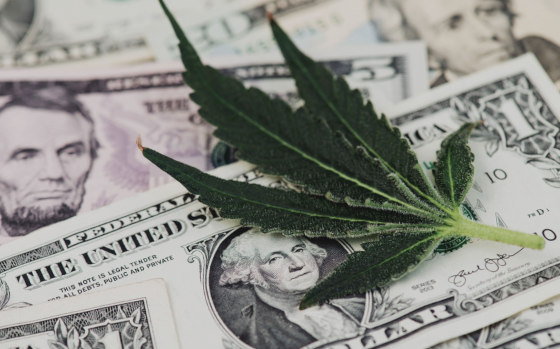
5. Navigating Licenses, Permits, and Regulations
Without the proper licenses and permits, you can’t legally open your dispensary. Period. The application process often ranks as the most stressful—and potentially expensive—hurdle. Expect to fill out pages and pages of forms, compile volumes of documentation, and pass background checks.
Types of Licenses You May Need
- State Cannabis Retail License
This is the big one. Every legal cannabis state has a system, often with limited “windows” or license caps. - Local Dispensary Permit
Your city or county might require a separate local permit, typically with additional requirements (zoning buffers, parking, signage, etc.). - Seller’s Permit / Sales Tax License
Even if you’re in cannabis, you still must collect and remit sales tax on your products unless your state has special exemptions for medical cannabis. - Business License
A generic local business license is often needed to operate a retail store in many municipalities. - DBA Registration
If you are operating under a trade name rather than your registered legal entity name, you usually must file for a Doing Business As license. - Security & Surveillance Approvals
Many jurisdictions mandate specific cameras, alarm systems, security guard requirements, and a locked area for cannabis storage.
Application & Fees
- Application Fees can range anywhere from $250 (in some smaller states) up to $30,000 (in places like Illinois or Florida).
- Annual Renewal Fees might also be in the thousands or tens of thousands.
- Background Checks usually involve fingerprinting, verifying finances, plus scrutiny of past criminal records.
Pro Tip: Start your license application early. Gather all the required documents well in advance. The process can take months (or longer) to finalize.
6. Finding the Perfect Location
In any retail business, location matters. But with cannabis retail, it’s often the make-or-break factor for both success and regulatory compliance.
Zoning Requirements
- Many states and local municipalities require dispensaries to be located at least 500–1,000 feet away from schools, daycares, parks, or churches.
- In some states, dispensaries cannot share a building or be in a strip mall. They must be standalone.
- Certain cities limit the total number of dispensaries that can open in a given neighborhood or block.
Buying vs. Leasing
- Buying Property: You have complete control over the building and can renovate as you wish. But the upfront cost can be enormous.
- Leasing Property: Some landlords refuse cannabis tenants due to banking or personal concerns, or they demand higher rent. Make sure your lease explicitly states it’s for a cannabis dispensary to avoid future eviction.
Local Demographics
- Proximity to Target Market: Are you aiming for medical patients? Consider near hospitals or senior communities. Recreational? Then high-traffic commercial areas might be ideal.
- Competition: Check how many dispensaries are in the area. Are they well-established with loyal customers?
- Foot Traffic & Parking: Cannabis consumers often appreciate quick in-and-out shopping. If customers can’t find parking, you might lose them.
By the end of this location hunt, you’ll likely have a short list of potential sites. Work closely with a commercial realtor who understands the cannabis industry. And once you’ve found “the one,” verify the local zoning laws thoroughly before signing anything.
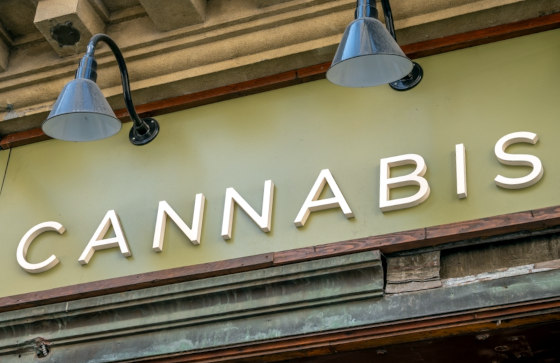
7. Building Your Dispensary Dream Team
Your employees will make or break your customer experience. Dispensaries usually employ:
- Budtenders (the front-line staff)
- Store Manager or General Manager
- Inventory Manager
- Security Personnel
- Receptionist/Greeter (for waiting rooms)
- Compliance or Operations Manager
What Makes a Great Budtender?
A budtender is your brand ambassador. They educate customers on product types, effects, and dosing, while ensuring all sales follow strict regulations. Look for:
- Passion for Cannabis: It’s easier to train compliance than it is to teach genuine enthusiasm.
- Communication Skills: Budtenders need to be approachable and empathetic.
- Attention to Detail: Mistakes in ID checks or data entry can cost your license.
Key Support Staff
- Compliance Officer: Keeps you up to date on local, state, and federal guidelines. Conducts internal audits, monitors track-and-trace data, and handles any rule changes.
- CPA / Accountant: Cannabis accounting is tricky. You need an expert who understands 280E, state excise taxes, and complex inventory cost allocations.
- Legal Counsel: A cannabis-focused attorney can steer you around pitfalls in licensing, corporate structure, and real estate leases.
- Security Consultant: Helps design your camera systems, alarm protocols, cannabis storage vaults, and staff safety training.
Recruiting Tactics
- Post on specialized cannabis job boards (Leafwire, Vangst).
- Use your website to highlight open roles.
- Offer competitive wages—budtenders often see this as a career, not just a short-term job.
Focus on building a cohesive group that aligns with your brand and values. Word-of-mouth matters in cannabis, and your employees create the vibe that customers experience.
8. Designing Your Dispensary Experience
A cannabis dispensary isn’t just another retail store. The layout, ambiance, and customer flow can influence whether a shopper returns or tries a competitor.
Common Dispensary Layout Models
- Bank Model
A classic layout: customers check in, wait in a lounge area, then move to a secured room with a counter. Each budtender serves one customer at a time, like a bank teller. - Pharmacy Model
Similar to the bank model, but customers receive a prescription-like slip that they take to a separate window for product pickup. - Mobile or Open Layout
Customers roam free to see product displays in locked cases. Budtenders roam around with tablets or stand behind an open counter. This can feel more casual and is growing in popularity. - Kiosk Model
Customers browse digital kiosks, place orders, then pick them up at a secure dispensing area.
Store Aesthetics & Branding
- Décor & Ambience: Cannabis customers now expect modern, stylish interiors—gone are the dingy head-shop days.
- Product Display: Edibles, flowers, tinctures, topicals, and accessories might each require their own distinct area.
- Signage & Compliance: Remember to post the legally required disclaimers, age limit signs, and no-consumption-on-premises notices.
Pro Tip: Make your dispensary comfortable. Some folks may be first-time cannabis users with questions or concerns. A friendly, modern, and inviting environment helps break stigma.
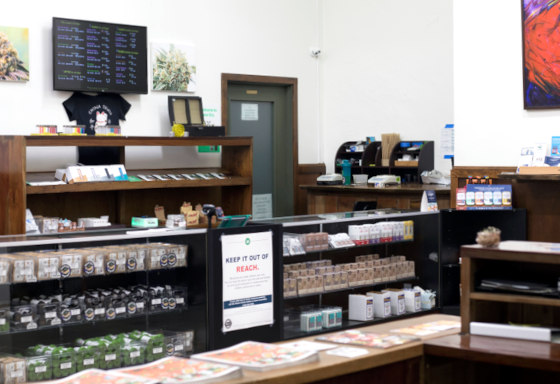
9. Inventory Management & Product Selection
Cannabis dispensaries are heavily regulated in how they track products from “seed-to-sale.” This means each gram of flower, every edible, every tincture, and every vape cartridge is tracked through the supply chain.
Sourcing Your Cannabis
- Vertical Integration: In some states (e.g., Colorado for medical), you might be required or encouraged to grow a percentage of what you sell.
- Licensed Wholesalers: Other states prefer a separation of production and retail, meaning you’ll purchase from growers or manufacturers.
- Diversity in Products: Stocking high-quality flowers is vital, but so are popular edibles, concentrates, tinctures, topicals, and accessories.
Track-and-Trace Systems
- Metrc is used by many states (e.g., California, Michigan, Nevada).
- BioTrack or MJ Freeway might be mandated in others.
- Each package has a unique ID tag. You must log everything from receiving shipments to final sale.
Inventory Controls
- Daily Audits: Many states require daily or weekly reconciliations to ensure your on-hand product matches the system data.
- Secure Storage: Cannabis must be locked in restricted areas. End-of-day leftover product returns to the safe or vault.
- Spoilage & Disposal: If a batch fails lab testing or you have out-of-date products, strict rules govern how it’s disposed of or returned to the supplier.
Mastering tight inventory management is crucial for compliance and profitability. Few things can shut you down faster than losing track of product or failing an audit.
10. Setting Up Banking, Insurance, and Tax Compliance
Banking Challenges
Because cannabis is still federally illegal in the U.S., big banks (protected by the FDIC) often refuse to serve dispensaries. However, more local credit unions and niche banks are stepping up. A legitimate checking account is essential for:
- Paying employees by check or direct deposit
- Accepting debit-based cannabis transaction solutions (since most standard merchant providers are off-limits)
- Ensuring an auditable paper trail
Insurance Must-Haves
- General Liability: Protects against slips, falls, and lawsuits from customers.
- Product Liability: If someone claims a product made them ill or caused harm, you need coverage.
- Property Insurance: Covers the building and contents in case of fire, theft, etc.
- Crop Insurance (if you also grow): Protects your plants in greenhouses or indoor grows.
Tax Obligations
- Federal Taxes: Even though you can’t deduct many normal business expenses under 280E, you still must file and pay federal taxes.
- State & Local Sales Taxes: Cannabis is subject to special excise taxes in many states (often 10–45% for recreational).
- Employee Withholding: Properly handle payroll taxes.
Consider hiring a cannabis-focused CPA who knows all the ins and outs. Filing incorrectly can lead to steep fines.

11. Choosing the Right Technology & Infrastructure
Opening a dispensary in 2025 or beyond demands a solid tech backbone. You have a lot of moving parts: seed-to-sale tracking, POS, e-commerce for pickup orders, staff scheduling, marketing, and compliance reporting.
Point-of-Sale (POS) Systems
- Compliance Integration: The POS must sync with your state’s track-and-trace system automatically.
- Inventory Management: Real-time product counts, daily reconciliations, and low-stock alerts.
- Analytics & Reporting: Sales data by product type, day/time trends, budtender performance.
In-Store Technology
- Digital Signage: Menus that update in real-time for new promotions or sold-out items.
- Tablets for Budtenders: Provide info on strains, dosage, and consumption methods, plus speed up transactions.
Data Privacy & Security
- You’ll collect sensitive personal data (ID details, possible medical info for medical patients). Comply with your region’s data protection laws like PIPEDA in Canada or relevant U.S. state privacy laws.
- Keep backups. Store your security footage. Many jurisdictions require 24/7 camera coverage with at least 30–90 days of archived footage.
When your store’s tech systems run smoothly, staff can focus on delivering an enjoyable experience rather than fumbling with software or dealing with downtime.
12. Developing Your Marketing Strategy
Cannabis marketing often has more restrictions than other retail sectors. Many platforms like Google Ads and Facebook ads still ban direct cannabis advertising (depending on local rules). That means you must be strategic and creative.
Grassroots & Community Engagement
- Local Partnerships: Team up with nearby wellness centers, yoga studios, or complementary retailers.
- Event Sponsorships: Sponsor or attend trade shows, cannabis fairs, local concerts, or charity events.
Online Presence
- Dispensary Directories: Listing sites like Weedmaps or Leafly are must-haves for visibility.
- SEO & Website: Develop a sleek, user-friendly site. Publish educational content about different strains, dosing, or laws to drive search traffic.
- Social Media: Platforms like Instagram can be used, but you must ensure content does not violate platform guidelines or local laws on advertising.
Building Loyalty
- Customer Loyalty Programs: Offer deals after a certain number of purchases, or reward points for every dollar spent.
- Email & Text Campaigns: Keep customers updated on new products, promotions, or local rule changes.
Remember, your marketing must comply with your local restrictions. Some states forbid certain images, cartoon mascots, or marketing that appeals to minors. Others ban billboard advertising within a set distance from highways. Always double-check your local laws.
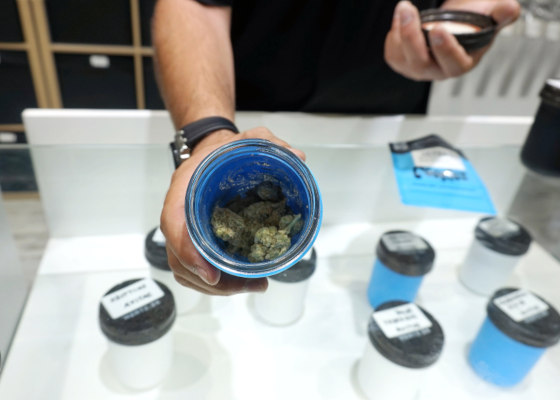
13. Preparing for Your Grand Opening
You’ve done the big steps—hired staff, found a location, gotten licensed, set up your security, built a robust inventory. Now, it’s time to open your doors!
Final Inspections
- State/Local Inspectors: They’ll likely check your premises, camera systems, vault, signage, and product logs.
- Fire Safety: Ensure extinguishers, sprinklers, and alarms meet code.
- Layout & Compliance: If the inspector sees you’re too close to a school or lacking a waiting room for ID checks, you might be delayed.
Soft Launch vs. Grand Opening
- A soft launch (friends, family, or a small group) helps you test your POS system, staff readiness, and overall flow before the big day.
- Grand Opening: Market this event heavily. Offer promotions, or host an educational Q&A with local influencers or budtenders.
Inventory Levels
- Don’t run out on day one! Stock up on your top SKUs, but don’t over-order so much you tie up your entire budget in product.
Celebrate Responsibly
- You can’t allow on-site consumption in most states, so if you’re doing a celebratory event, ensure you follow the rules.
- Provide freebies or special sales carefully, as some states prohibit “giving away” cannabis products.
The grand opening is a big day. Have a plan for line management if you suspect huge crowds. Provide water or freebies to keep folks happy, and train staff to handle potential media coverage.
14. Operating Day-to-Day & Ongoing Compliance
Opening is a milestone, but ongoing success demands constant attention to compliance, finances, staff management, marketing, and inventory.
Daily Operations Checklist
- Morning Routine: Count your cash float, power on POS, open safe, stock displays.
- ID Verification: Train staff to check IDs properly. Accidental sales to minors can destroy your license.
- Daily Inventory Audit: Reconcile each night. Log any discrepancies and investigate immediately.
Expanding Your Product Lines
- Edibles & Concentrates: Evaluate new trending product types. Are your customers asking for beverages, topicals, or anything unusual like THC-infused snack foods?
- Brand Partnerships: Local brands can differentiate your dispensary. Many consumers love supporting craft producers.
Ongoing Regulatory Updates
- Laws shift quickly, especially with cannabis. Subscribe to local regulatory newsletters or partner with a compliance attorney. Even packaging laws (like child-resistant containers) can change.
Cash Handling & Security
- Many dispensaries still deal mostly in cash. Implement strict protocols for counting, depositing, and storing cash.
- Keep cameras running at all times in sales and storage areas.
Your biggest advantage is adaptability. Stay flexible, keep your staff well-trained, and embrace changes in the industry.
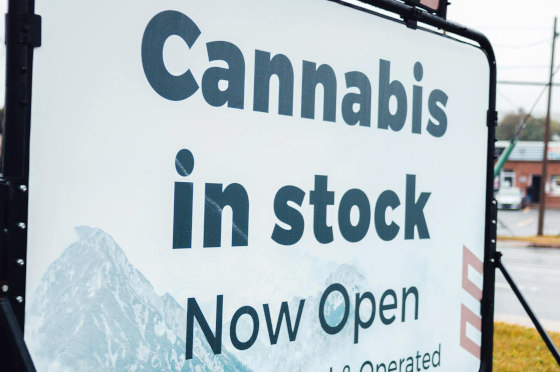
15. Final Thoughts & Looking Ahead
Opening a dispensary can be one of the most rewarding but complex endeavors you’ll ever undertake. The cannabis industry is dynamic, with new states legalizing, social equity programs emerging, and consumer tastes shifting daily. Yet, the opportunity is massive. Cannabis has gone from taboo to mainstream in what feels like record time—and it’s not slowing down.
If you:
- Thoroughly research your market and local laws
- Secure the proper capital
- Lock in a strong business plan and location
- Hire a capable, enthusiastic, and compliant staff
- Keep a rock-solid grip on inventory and finances
- Market yourself creatively, focusing on education and community involvement
- Remain vigilant about compliance, security, and quality customer service
…then you stand an excellent chance of succeeding in this thriving field.
Future Outlook
As federal attitudes soften and banking/insurance restrictions ease, cannabis retail may become far simpler. Established dispensaries could see easier access to loans, expansions into new territories, and more sophisticated marketing channels. Additionally, new product innovation—like low-dose THC beverages, alternative cannabinoids, and customized cannabis for wellness—may bring fresh waves of demand.
Keep an eye out for:
- Federal Legalization Efforts: This would drastically shift banking, interstate commerce, and taxation.
- Social Equity Licensing: Many states prioritize licenses for communities disproportionately affected by past cannabis laws.
- Technological Innovations: From AI-driven cultivation to automated dispensing kiosks, cannabis tech will keep booming.
Above all, approach your dispensary journey with passion, integrity, and a commitment to educating consumers. The cannabis movement is about more than profit. It’s about providing safe access to products that many people enjoy, rely on for relief, or incorporate into a healthy lifestyle. Your store could become an anchor in your community, serving and educating customers from all walks of life.

